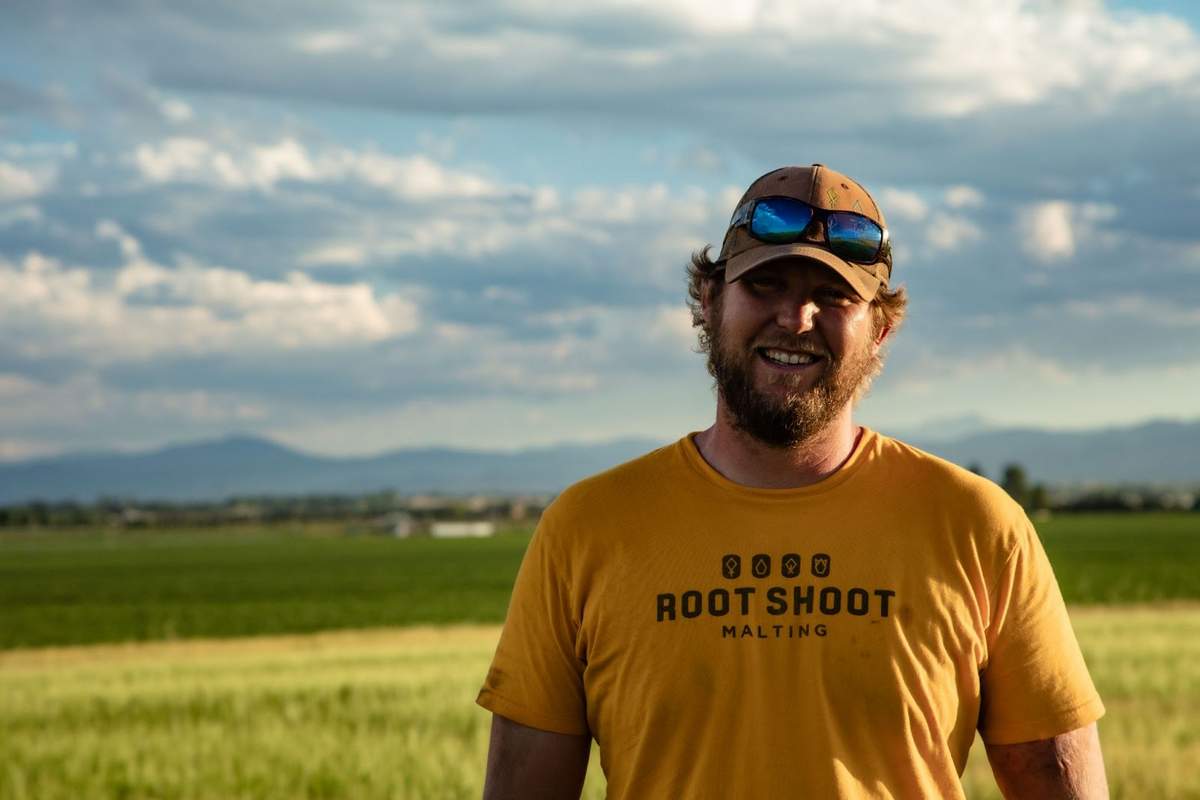
Root Shoot Malting is a 5th generation family farm and craft malthouse that supplies the Rocky Mountain region with craft malt and grains. Founded by the Olander family in 2016, the farm is committed to the regenerative agriculture movement. Root Shoot harvests barley, wheat, rye, and corn to give craft brewers and distillers high-quality taste in every glass. Located on the Olander Farms’ 112-acre farm in Loveland, Colorado, and approximately 1,500 leased acres, Root Shoot is working to ensure that farmland remains available to grow grains for the beers and spirits of tomorrow through its conservation easement with Colorado Open Lands. Find this craft maltster online at rootshootmalting.com.
Turn It Up marketing recently did a Q&A interview with Root Shoot farmer and founder Todd Olander, where he identified trends and insights from 2023 that will predict what the craft malting industry will see in 2024. Some of that interview is below. Olander was also just honored this month as a member of the 2024 class of the Imbibe 75, Imbibe Magazine’s annual best-of list showcases the “people and places that will shape the way we drink in 2024 and beyond.” Let’s learn more about Olander and his awesome operation below.
Todd, thanks for taking the time to talk to us here at CBB. We love your operations, and we cover Root Shoot a lot on this site, so it’s awesome to have you share your insights. First off, let’s talk about the industry in general. What’s maybe the biggest change you’ve seen in the farming and malting industry over the past decade?
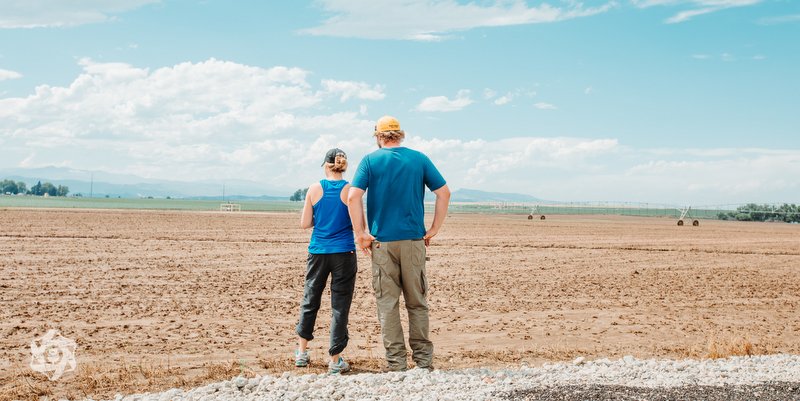
On the malting front, the craft malt movement as a whole has really come into its own. The number of craft malthouses has increased steadily providing many more partners to work with and bounce ideas off of. That increase in the quantity and presence of craft malthouses has led, I think, to a meaningful shift in craft beverage enthusiasts actively seeking out these unique, small-batch malts which underscores a newfound awareness and appreciation for the industry.
Additionally, the increase in craft malthouses has allowed for much more experimentation with malt: these businesses are playing with flavors and kilning regimes that challenge the traditional norms of the giants of the malting industry. It feels like craft malt has become a distinct and celebrated component of the craft beverage experience.
What’s particularly noteworthy is how the craft malt industry has become a trailblazer in connecting consumers with the agricultural roots of their drinks. There’s a conscious effort to bridge the gap between beer and spirit drinkers and farmers, emphasizing the origin of the raw materials. This focus on transparency and locality resonates with a growing segment of consumers who value the story behind their beverage. This focus on agriculture is coming just at the right time, because the agriculture industry has been shifting as well in both positive and challenging ways.
On the positive front, I feel the farming landscape has shifted towards sustainable practices in some cases, even when they may not be explicitly labeled as such. The adoption of no-till systems is now generally considered a best practice backed by science, and the use of cover crops is rapidly gaining ground. However, there have been other more challenging changes, too. One that is particularly intense here in the Front Range of Colorado is urban encroachment, with farms facing mounting pressure to yield to urbanization. The weather, too, has become pretty wild. Farmers have always been subject to the whims of Mother Nature, but increasing extremes are making it that much more difficult.
Looking forward to beer and spirit trends in 2024 what are people drinking, and how will this affect what you plan to grow this year?

Perhaps we’re biased but it sure seems that in the spirits world, the spotlight is undeniably on American Single Malt Whiskey, now officially recognized as a distinct spirits category. The excitement around its formal recognition has kicked off a surge of innovation and diverse approaches to its production and creating the desired flavor profiles.
One fun note, at least for us, is that heritage and heirloom grain varieties are starting to make an appearance in American Single Malt Whiskeys and in the larger world of craft spirits. We’re happy to see both distillers and drinkers celebrating the rich diversity of grains that are actually out there.
In the beer realm, we’ve seen a real rise in lagers. Maybe this is a needed and refreshing departure from the dominance of IPAs in recent years. IPAs aren’t going away, however. We’ve seen an increase in sales of malted oats for use in Hazy IPAs and there is always a die-hard IPA crowd. On an anecdotal note, our malthouse manager says that he’s had more conversations around brown beers, spanning from ales to stouts to barleywines, than he ever has, so that’s something we’re watching to see if it turns into a trend.
As for farming, I don’t know that it will change anything we’re growing drastically. We’ve found some really good grain varieties that work for us, and we stick to them for the bulk of our products. The real magic happens in the malting. We do, however, always run some trial fields. Currently, there’s a lot of interest in Kernza, a perennial grain touted for its climate-friendly attributes. We’re growing a few acres of it, but we still have a whole lot to learn before deciding if it’s even a viable option to pursue.
Winter barley varieties like Thunder and Lighting were a focus for Root Shoot in 2023, what have you learned and what will you be doing differently in 2024?
Oh, boy … what have we learned? Maybe that if you plant varieties with stormy names, you’re asking for trouble. Both of those varieties were hit by hail this year, which drastically reduced the yield and will definitely slow us down in learning more about them. Of the two, Thunder came out a little better, so that’s the first one we’re tackling a trial malting batch of and it’s in the mal drum as we speak, so you’ll have to ask us later how that comes out.
Since we got less Lightning out of that damaged harvest, we’re giving it another go and have a few more trial acres of it currently planted. Fingers crossed the weather cooperates a little more this year. That’s the thing with farming: you only get one chance per year to try something, so sometimes it takes us many years of work before we’re confident we’ve come to an accurate and viable solution. So, much like with the Kernza, I’d say we still have a lot of work to do.
We had a wet year in 2023, and this affected harvest times and yields. Is this something you see as a trend going forward?
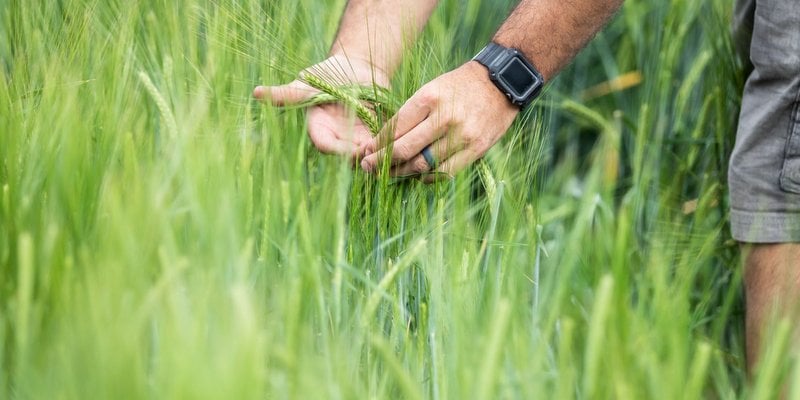
As a fifth-generation Coloradan, I have to say I definitely don’t see wet becoming the new normal. We had an unusually good year for precipitation this past year, though that always comes with the attached risk of thunderstorms and hail. Ultimately, we live in a dry climate and producers need to plan operations to function on the assumption of little rain, and sometimes even little available irrigation. That being said, farmers have always had to deal with unpredictable harvest times and yields. While climate change may be exacerbating that certainly, it’s just part and parcel of the farming game. People often ask us when we’ll be harvesting certain crops, but at best all we can do is give a window of time: the decision to harvest is made on a day-by-day basis as plants mature and we observe and test them.
What do you expect from the future in the malthouse as you maximize the footprint in terms of equipment?
That’s a good question because this year has been a big step for us. After seven years of continuous construction and expansion since we’ve opened, we have finally reached max capacity in terms of our physical space. It’s a relief actually, because now, rather than focusing on the logistics of expansion, we can put all our time and energy toward refining efficiency and doing what we do even better. We don’t actually want to grow larger than this size, because we want to ensure we never get too big. Personal attention to each customer is really important to us and we want to stay at a size where we feel like we’re consistently providing that high level of service.
Additionally, without the distraction of construction, we’re also able to do a little more exploring on the malting side. I mentioned that we do experimental grain trials in the fields each year, but we also have to learn how to handle those grains in the malthouse. I think now, we’ll have more manpower and more brainpower to work on this and, hopefully, really lock it in.
You released your first single-malt whiskey this year and have seen the other side of production first-hand. What have you learned and will this affect the malthouse or the farm going forward as you look to expand your spirits production?
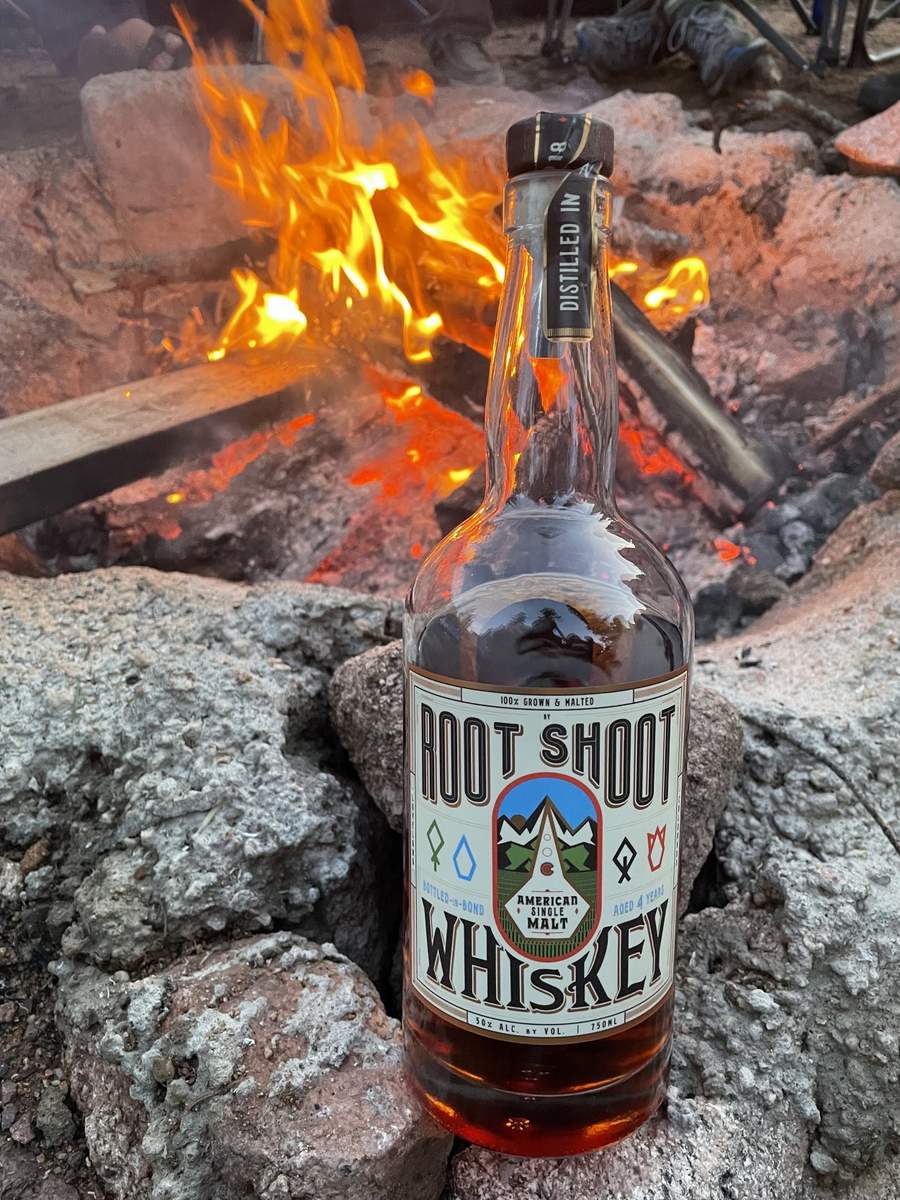
Releasing a whiskey is certainly different from running a farm! We had a very steep learning curve just on the regulation piece alone. I suppose it goes without saying that whiskey is much more highly regulated than raw grains — it took us a year to wade through paperwork and legalities. We’ll be making and maintaining some practical logistical changes to our space usage to ensure we meet all the regulations to the letter, but beyond that, I don’t anticipate any drastic impacts on the farm or malthouse for one simple reason: we decided to make whiskey because we already knew we were growing some great grain and turning that grain into excellent malt. We still think that! I really think that’s where we have the most room to grow is in refining our ability to intentionally choose the malt combinations we use to create intentional and memorable flavor profiles and tasting experiences … and that is some fun learning to look forward to!

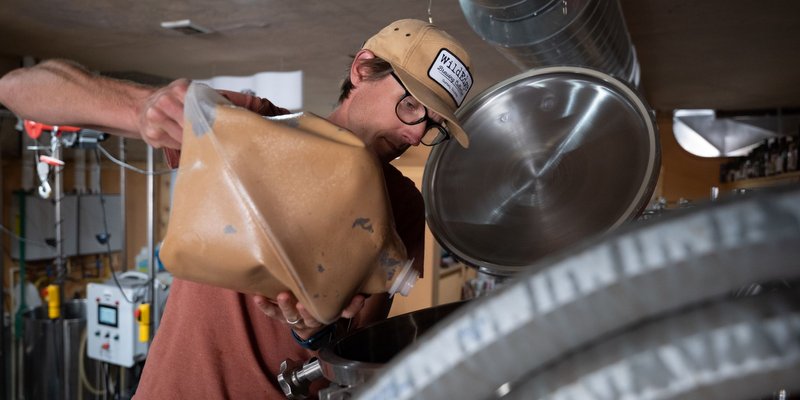
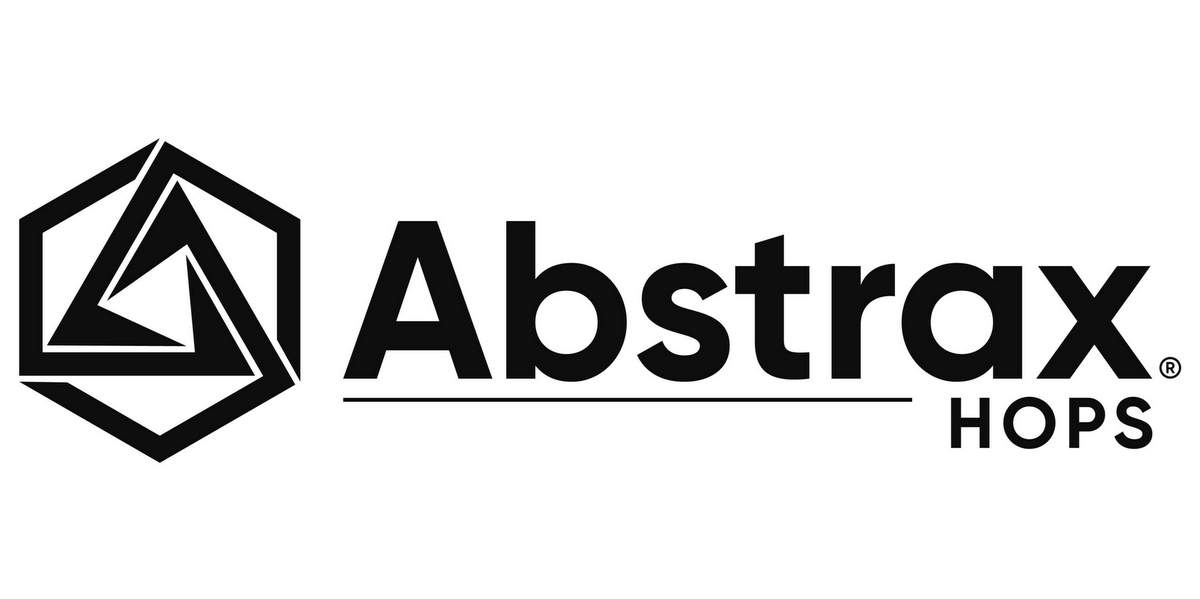

Leave a Reply
You must be logged in to post a comment.